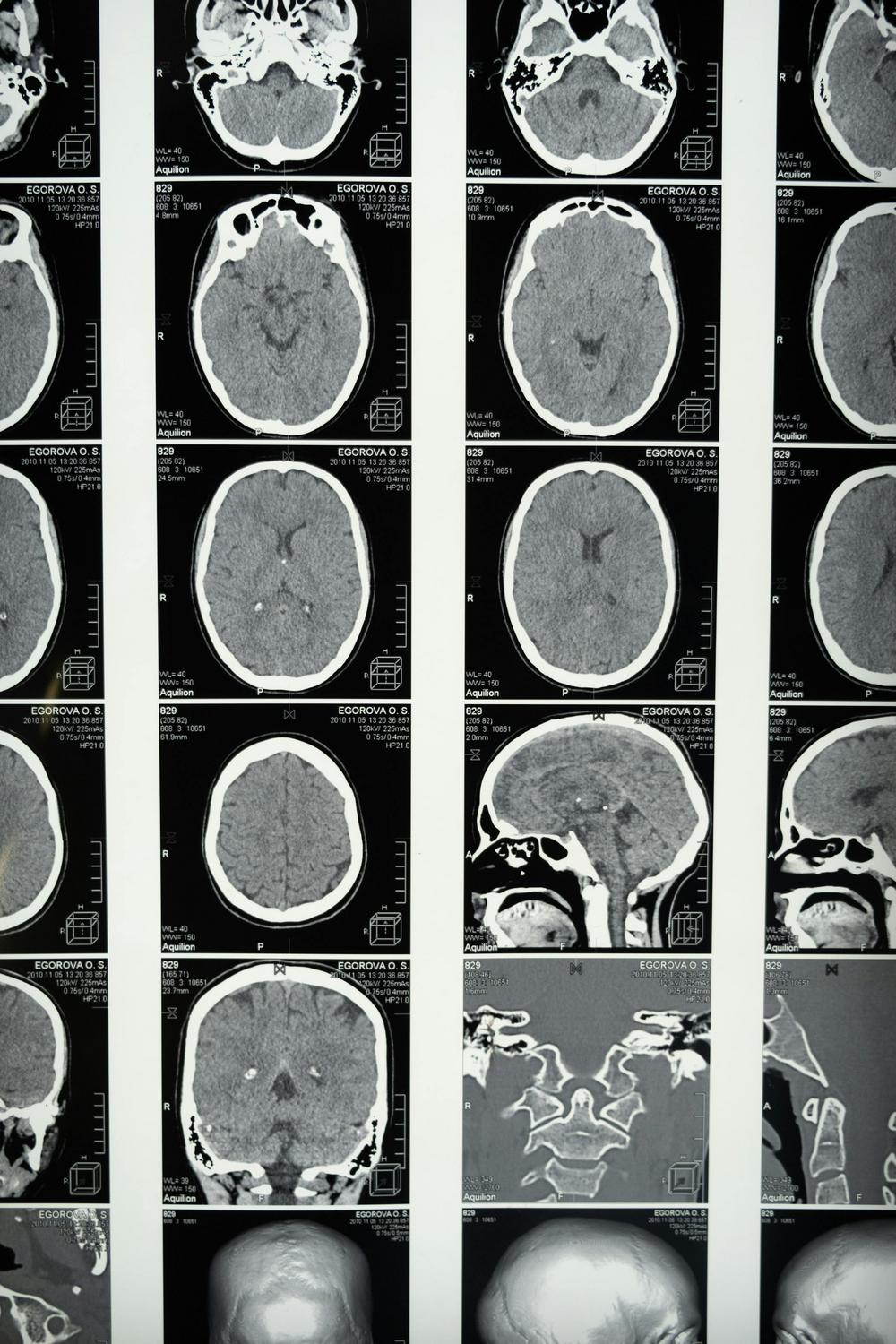Every human body possesses an extraordinary capacity to adapt to stress—a biological imperative refined over millennia. Yet this adaptive brilliance harbours a hidden cost. When your cardiovascular system recalibrates under pressure, when your immune responses mobilise repeatedly, when your metabolic pathways shift to meet perceived threats, these protective mechanisms exact a toll. This cumulative biological burden—termed allostatic load—represents one of the most significant yet underappreciated factors influencing long-term health outcomes in contemporary society. For Australians navigating an increasingly complex landscape of professional demands, environmental pressures, and social expectations, understanding this phenomenon has become essential to preserving physiological integrity across the lifespan.
What Is Allostatic Load and Why Does It Matter?
Allostatic load describes the physiological consequences of chronic exposure to fluctuating or heightened neural and neuroendocrine responses resulting from repeated or chronic stress. Coined by researchers McEwen and Stellar in the 1990s, this concept fundamentally distinguishes between the acute stress response—a protective, adaptive mechanism—and the wear-and-tear that accumulates when these systems activate too frequently or fail to deactivate appropriately.
The term “allostasis” itself means “achieving stability through change,” referring to the body’s dynamic regulation of internal states in response to external demands. Unlike homeostasis, which implies maintaining fixed set points, allostasis acknowledges that optimal physiological parameters shift based on anticipated needs and environmental challenges. Allostatic load emerges when this adaptive flexibility becomes dysregulated, transforming from a protective mechanism into a source of pathophysiological change.
This biological weathering manifests across multiple interconnected systems simultaneously. Cardiovascular parameters—including blood pressure, heart rate variability, and arterial stiffness—show measurable alterations. Metabolic indicators such as glycated haemoglobin, lipid profiles, and waist-to-hip ratios reflect dysregulation. Immune function markers demonstrate both inflammatory upregulation and compromised cellular immunity. Neuroendocrine mediators, particularly cortisol rhythms and sympathetic nervous system activity, display aberrant patterns. The integration of these multi-system changes creates a composite picture of physiological resilience—or its erosion.
How Does Chronic Stress Accumulate in the Human Body?
The accumulation of allostatic load follows predictable patterns, though individual trajectories vary considerably based on genetic predisposition, early life experiences, socioeconomic factors, and environmental exposures. The process begins with allostasis—the adaptive response to stress that mobilises physiological resources to meet challenges. When stressors resolve and recovery occurs, this response proves beneficial, even strengthening resilience. However, four distinct patterns of allostatic load development have been characterised in scientific literature.
Repeated hits occur when an individual faces multiple distinct stressors without adequate recovery periods between challenges. Each stress episode triggers the full cascade of physiological responses, but the systems involved never fully return to baseline before the next challenge arrives. This pattern commonly affects healthcare workers, emergency services personnel, and individuals managing multiple chronic life circumstances simultaneously.
Lack of adaptation describes situations where the stress response fails to habituate despite repeated exposure to the same stressor. Rather than becoming more efficient or requiring fewer resources over time, the physiological response maintains its initial intensity or even amplifies. This pattern frequently emerges in contexts of workplace conflict, chronic pain conditions, or persistent environmental threats.
Prolonged response manifests when stress-responsive systems activate appropriately but fail to deactivate once the stressor resolves. The cardiovascular, metabolic, and immune systems remain in a heightened state of alertness long after the challenge has passed. This extended activation period contributes substantially to cumulative wear.
Inadequate response represents a paradoxical pattern where one stress-responsive system fails to activate sufficiently, causing compensatory over-activation in other systems. For instance, blunted cortisol responses may lead to excessive inflammatory signalling, as glucocorticoids normally exert anti-inflammatory effects.
What Biological Systems Experience the Greatest Impact?
Allostatic load demonstrates remarkable breadth in its physiological impacts, yet certain systems display particular vulnerability to cumulative stress exposure. Understanding these system-specific effects illuminates the mechanisms through which chronic stress translates into clinical health outcomes.
Cardiovascular Manifestations
The cardiovascular system exhibits some of the most clinically significant effects of elevated allostatic load. Chronic activation of sympathetic nervous system pathways leads to sustained increases in blood pressure, even during periods when individuals perceive themselves as relaxed. This elevation reflects both structural vascular changes—including arterial stiffening and endothelial dysfunction—and persistent increases in cardiac contractility and heart rate.
Research examining allostatic load indices consistently identifies blood pressure as one of the most sensitive markers. Both systolic and diastolic measurements show graded relationships with cumulative stress exposure. Heart rate variability, a sophisticated measure of autonomic nervous system balance, typically decreases as allostatic load increases, reflecting reduced parasympathetic tone and diminished capacity for cardiovascular flexibility.
Metabolic Dysregulation
Metabolic consequences of allostatic load extend across glucose regulation, lipid metabolism, and body composition. Chronic stress-responsive system activation promotes insulin resistance through multiple pathways, including direct hormonal effects, inflammatory signalling, and behavioural changes in eating patterns and physical activity. Glycated haemoglobin, which reflects longer-term glucose control, shows strong associations with allostatic load scores.
Lipid profiles demonstrate characteristic patterns under conditions of elevated allostatic load, with increases in total cholesterol, low-density lipoprotein cholesterol, and triglycerides, alongside reductions in protective high-density lipoprotein cholesterol. These changes occur through both direct metabolic effects and indirect influences on dietary behaviours and physical activity patterns.
Central adiposity—fat accumulation around abdominal organs—represents another hallmark metabolic consequence. The waist-to-hip ratio provides a practical clinical measure of this fat distribution pattern, which carries particular significance for cardiovascular and metabolic disease risk.
Immune System Alterations
The relationship between allostatic load and immune function reveals remarkable complexity. Both excessive inflammatory activation and compromised cellular immunity emerge as consequences of chronic stress exposure. This apparent contradiction reflects the dual nature of stress-immune interactions across different timeframes and contexts.
Pro-inflammatory cytokines, including interleukin-6 and C-reactive protein, typically increase under conditions of elevated allostatic load. This chronic low-grade inflammation contributes to numerous age-related conditions and accelerates biological ageing processes. Simultaneously, cellular immune responses—including natural killer cell activity and T-lymphocyte function—often show impairment, increasing vulnerability to infections and potentially compromising tumour surveillance mechanisms.
Neuroendocrine Disruption
The hypothalamic-pituitary-adrenal axis, which coordinates the body’s hormonal stress response, displays complex patterns of dysregulation under conditions of sustained allostatic load. Rather than simply showing elevated cortisol, individuals with high allostatic load may exhibit flattened diurnal cortisol rhythms, with reduced morning awakening responses and elevated evening levels.
Dehydroepiandrosterone (DHEA), an adrenal hormone with potential neuroprotective and immune-modulating properties, typically declines relative to cortisol as allostatic load increases. The cortisol-to-DHEA ratio has emerged as a particularly informative marker of allostatic state.
Can Allostatic Load Be Measured Accurately?
Quantifying allostatic load presents both conceptual and practical challenges, yet standardised approaches have emerged from decades of research. The composite nature of allostatic load—reflecting cumulative burden across multiple physiological systems—necessitates multi-marker assessment strategies rather than reliance on any single biomarker.
The most widely validated approach employs an allostatic load index that integrates measures across four primary domains: cardiovascular function, metabolic regulation, immune-inflammatory status, and neuroendocrine activity. Within each domain, researchers identify clinically relevant biomarkers and establish risk thresholds based on either clinical cut-points or distribution quartiles within reference populations.
| Physiological Domain | Primary Biomarkers | Clinical Significance |
|---|---|---|
| Cardiovascular | Systolic BP, Diastolic BP, Heart Rate, Pulse Pressure | Direct cardiovascular disease risk; reflects autonomic dysregulation |
| Metabolic | HbA1c, Total Cholesterol, HDL-C, Triglycerides, Waist-Hip Ratio, BMI | Cardiometabolic disease risk; insulin resistance indicators |
| Immune-Inflammatory | C-Reactive Protein, Interleukin-6, Fibrinogen, Albumin | Systemic inflammation; infection vulnerability |
| Neuroendocrine | Cortisol (multiple timepoints), DHEA-S, Epinephrine, Norepinephrine | HPA axis function; sympathetic-adrenal activation |
Individuals receive one point for each biomarker falling within the highest-risk quartile (or above established clinical thresholds). These points aggregate to create a total allostatic load score, typically ranging from zero to ten or higher depending on the number of markers assessed. Higher scores indicate greater cumulative physiological burden and predict elevated risk for numerous adverse health outcomes.
Temporal considerations prove crucial when interpreting allostatic load measurements. Single timepoint assessments provide valuable snapshots but cannot capture the dynamic nature of allostatic processes. Longitudinal monitoring reveals trajectories of change, distinguishing individuals whose allostatic load remains stable, improves, or deteriorates over time. These trajectories demonstrate stronger predictive validity for long-term health outcomes than isolated measurements.
How Does Allostatic Load Influence Long-Term Health Outcomes?
The clinical significance of allostatic load extends far beyond academic interest, with substantial evidence linking elevated scores to concrete health outcomes across multiple domains. Longitudinal studies following populations for decades have established allostatic load as a robust predictor of morbidity and mortality, independent of traditional risk factors.
Cardiovascular disease demonstrates particularly strong associations with allostatic load. Individuals with elevated scores face significantly increased risk of hypertension, coronary artery disease, myocardial infarction, and stroke. These relationships persist after controlling for traditional cardiovascular risk factors, suggesting that the multi-system burden captured by allostatic load indices provides prognostic information beyond conventional risk assessment tools.
Cognitive decline and dementia show graded relationships with midlife allostatic load scores. The mechanisms underlying these associations likely involve vascular contributions to cognitive impairment, inflammatory effects on neural tissue, and direct effects of chronic glucocorticoid exposure on hippocampal structure and function. Importantly, elevated allostatic load in middle age predicts cognitive outcomes decades later, highlighting the long temporal lag between physiological burden accumulation and clinical manifestation.
Functional limitations and physical decline emerge as allostatic load increases. Mobility impairment, difficulties with activities of daily living, and frailty all demonstrate strong associations with cumulative stress burden. These relationships reflect the integrated nature of physiological systems required for physical function, with multi-system dysregulation undermining the reserve capacity necessary for maintaining independence.
Mental health outcomes, including depression and anxiety disorders, show bidirectional relationships with allostatic load. Psychological distress contributes to allostatic load accumulation through multiple pathways, whilst elevated physiological burden increases vulnerability to mental health challenges. This reciprocal influence creates potential vicious cycles requiring integrated approaches to address both psychological and physiological dimensions.
All-cause mortality risk increases progressively with higher allostatic load scores. Meta-analyses aggregating data across multiple cohorts demonstrate that individuals in the highest allostatic load quartile face approximately twice the mortality risk of those in the lowest quartile over typical follow-up periods of 10-15 years.
What Factors Contribute to Individual Differences in Allostatic Load?
Substantial heterogeneity exists in allostatic load trajectories among individuals facing seemingly similar stress exposures. Understanding this variability illuminates opportunities for prevention and intervention whilst acknowledging the complex interplay of modifiable and non-modifiable influences.
Socioeconomic position emerges as one of the most consistent predictors of allostatic load across diverse populations. Individuals facing economic hardship, limited educational opportunities, occupational instability, and neighbourhood disadvantage demonstrate elevated allostatic load scores. These associations reflect both direct effects of material deprivation and indirect pathways involving health behaviours, environmental exposures, and psychological stress.
In Australia, socioeconomic gradients in allostatic load mirror broader health inequalities, with particular vulnerability observed among specific populations facing systemic disadvantage. Rural and remote residents, individuals from culturally and linguistically diverse backgrounds, and those experiencing housing instability show elevated allostatic burden, highlighting the social determinants dimension of this biological phenomenon.
Early life experiences exert profound and lasting influences on stress-responsive system development and subsequent allostatic load trajectories. Adverse childhood experiences—including abuse, neglect, household dysfunction, and parental mental illness—predict elevated allostatic load in adulthood, even after accounting for current life circumstances. These effects likely operate through multiple mechanisms: epigenetic modifications to stress-responsive genes, altered neural development in stress-regulatory brain regions, and established behavioural patterns affecting health-related choices.
Genetic variation contributes meaningfully to individual differences in stress reactivity and allostatic load accumulation. Polymorphisms in genes regulating glucocorticoid receptor function, serotonin signalling, and inflammatory responses influence how individuals respond to stress at molecular levels. However, genetic effects demonstrate substantial interaction with environmental factors, emphasising gene-environment interplay rather than genetic determinism.
Health behaviours represent critical modifiable factors influencing allostatic load trajectories. Physical activity patterns, sleep quality and duration, dietary composition, alcohol consumption, and smoking status all demonstrate independent associations with allostatic load indices. Importantly, these behaviours both influence and are influenced by physiological stress burden, creating opportunities for intervention but also potential barriers requiring acknowledgement.
Psychosocial resources, including social support networks, sense of purpose, perceived control, and coping strategies, buffer against allostatic load accumulation even in the presence of substantial stressors. Individuals embedded in supportive social relationships and possessing psychological resources for meaning-making and emotional regulation show lower allostatic burden than those facing similar objective stressors without these protective factors.
Moving Beyond Measurement: The Future of Allostatic Load Understanding
Contemporary allostatic load research increasingly emphasises precision in characterisation and intervention. Rather than treating allostatic load as a monolithic construct, emerging approaches recognise distinct patterns of multi-system dysregulation that may require tailored responses. Some individuals demonstrate predominantly metabolic dysregulation, others primarily cardiovascular or immune-inflammatory burden. These subtypes potentially respond differently to various intervention approaches.
Integration of allostatic load concepts into clinical practice remains limited despite robust research foundations. Practical barriers include the multi-marker assessment requirements, lack of standardised measurement protocols across different healthcare settings, and limited guidance on translating scores into clinical action. However, the predictive validity of allostatic load indices for long-term health outcomes suggests substantial potential value in identifying individuals who might benefit from intensive preventive interventions before overt disease emerges.
The temporal dynamics of allostatic load accumulation and potential reversibility require further elucidation. Whilst evidence demonstrates that elevated allostatic load predicts adverse outcomes, questions remain about critical windows for intervention, the degree to which accumulated burden can be reduced, and the timeframes over which such reductions translate into improved health trajectories. Understanding these dynamics will prove essential for optimising prevention and intervention strategies.
Emerging technologies, including wearable sensors, continuous biomarker monitoring, and sophisticated data analytics, may transform allostatic load assessment from research protocols requiring venipuncture and laboratory analysis to more accessible, real-time monitoring. Such advances could enable earlier detection of accumulating burden and more responsive, personalised intervention adjustments.
The concept of allostatic load provides a unifying framework for understanding how chronic stress “gets under the skin” to influence health across the lifespan. For Australians seeking to optimise long-term wellbeing, this framework highlights the importance of addressing not only acute stressors but the cumulative physiological burden they impose. Recognising the multi-system nature of stress impacts, the substantial individual variability in vulnerability, and the complex interplay of social, behavioural, and biological factors positions individuals and healthcare systems to develop more comprehensive, proactive approaches to stress management and health promotion.
How long does it take for allostatic load to develop?
Allostatic load represents a cumulative process that unfolds over months to years rather than days or weeks. The rate of accumulation varies substantially based on stress intensity, frequency, duration, and individual factors including genetic predisposition, early life experiences, and available protective resources. Some individuals demonstrate measurable increases in allostatic load markers within months of sustained stress exposure, whilst others maintain resilience despite years of challenge. Longitudinal research suggests that allostatic load patterns established in midlife predict health outcomes decades later, emphasising both the gradual nature of accumulation and the long temporal lag between physiological burden and clinical disease manifestation.
Can elevated allostatic load be reversed?
Emerging evidence suggests that allostatic load can be moderated and potentially reduced through comprehensive lifestyle modifications, though the degree and speed of reversal likely depends on the duration and severity of accumulated burden. Studies examining intensive lifestyle interventions—incorporating regular physical activity, sleep optimisation, dietary improvements, and stress management practices—demonstrate reductions in several allostatic load biomarkers over periods of several months. However, complete normalisation may prove challenging for individuals with longstanding elevated scores, and certain changes (particularly vascular stiffening and some metabolic alterations) may demonstrate limited reversibility. The most promising approach involves early identification and intervention before substantial irreversible changes occur.
Does everyone respond to stress with the same allostatic load pattern?
Individual responses to chronic stress demonstrate remarkable heterogeneity, with different people showing distinct patterns of physiological dysregulation. Some individuals predominantly display cardiovascular changes, others metabolic disruption, and still others immune-inflammatory activation. These varying patterns reflect genetic differences in stress-responsive systems, developmental influences on physiological regulation, and potentially sex-related variations in stress biology. Women and men show somewhat different allostatic load profiles, with women more commonly demonstrating metabolic and immune-inflammatory markers whilst men show stronger cardiovascular manifestations. Understanding these individual and subgroup differences has important implications for personalised approaches to stress management and health promotion.
What role does sleep play in allostatic load development?
Sleep disturbances contribute substantially to allostatic load accumulation through multiple interconnected pathways. Insufficient sleep duration, poor sleep quality, and circadian rhythm disruption all independently predict elevated allostatic load scores. During sleep, stress-responsive systems undergo essential recovery processes, including restoration of hypothalamic-pituitary-adrenal axis sensitivity, cardiovascular system recuperation, and immune system rebalancing. When sleep is chronically compromised, these recovery processes remain incomplete, accelerating allostatic load accumulation. Furthermore, elevated allostatic load itself often disrupts sleep architecture, creating bidirectional relationships that can establish self-perpetuating cycles. Prioritising sleep represents one of the most accessible and effective strategies for moderating cumulative stress burden.
Is allostatic load the same as “burnout”?
Whilst burnout and allostatic load share conceptual overlap—both involving consequences of prolonged stress—they represent distinct constructs assessed through different methods. Burnout describes a psychological syndrome characterised by emotional exhaustion, depersonalisation, and reduced personal accomplishment, typically assessed through self-report questionnaires focusing on subjective experience and workplace attitudes. Allostatic load, conversely, represents objective physiological dysregulation measured through biological markers across multiple organ systems. However, meaningful relationships exist between these constructs: individuals experiencing burnout typically demonstrate elevated allostatic load scores, whilst high allostatic load increases vulnerability to burnout. Understanding both psychological and physiological dimensions of chronic stress provides a more complete picture than either construct alone.













